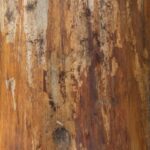When it comes to painting woodwork, one of the key decisions to make is whether to use gloss or semi-gloss paint. Understanding the difference between these two finishes and weighing their respective pros and cons can help you make an informed decision for your project. In this article, we will delve into the nuances of gloss and semi-gloss paint for woodwork, from their characteristics to best practices for application and maintenance.
Gloss and semi-gloss paints are both popular choices for woodwork due to their durability and sheen. However, there are distinct differences between the two that can impact the overall look and performance of the painted surface. Whether you are a seasoned DIY enthusiast or a homeowner looking to refresh your living space, knowing which type of paint suits your specific needs is crucial in achieving the desired results.
In the following sections, we will explore the advantages and drawbacks of using gloss and semi-gloss paint on woodwork. We will also discuss factors that should be taken into consideration when deciding between the two options, as well as provide expert tips for preparing, painting, and maintaining woodwork with either type of paint.
By the end of this article, you will be equipped with the knowledge needed to make an informed choice between gloss and semi-gloss paint for your woodwork project.
Pros and Cons of Using Gloss Paint on Woodwork
When it comes to painting woodwork, one of the most important decisions you’ll need to make is whether to use gloss or semi-gloss paint. Both options have their own set of pros and cons, so it’s important to weigh them carefully before making a decision.
Pros of Using Gloss Paint
Gloss paint offers a high-shine finish that can give woodwork a sleek and polished look. It is also very durable and easy to clean, making it well-suited for areas that are prone to getting dirty or scuffed. Gloss paint is resistant to moisture, which means it can withstand humid environments such as bathrooms and kitchens. Additionally, gloss paint tends to be more resistant to wear and tear than semi-gloss paint.
Cons of Using Gloss Paint
One of the main drawbacks of using gloss paint on woodwork is that it tends to highlight imperfections in the surface. This means that any dents, scratches, or other blemishes on the wood will be more noticeable with a glossy finish. Additionally, gloss paint has a tendency to show brush marks and roller stipple more prominently than semi-gloss paint. It also requires careful preparation and application to avoid drips and runs.
Pros and Cons of Using Semi-Gloss Paint on Woodwork
When it comes to painting woodwork, choosing the right finish is crucial. Semi-gloss paint is a popular choice for woodwork due to its durability and ease of cleaning. One of the main advantages of using semi-gloss paint on woodwork is its ability to resist moisture, making it an ideal option for humid environments such as kitchens and bathrooms. The sheen of semi-gloss paint also adds a subtle shine to woodwork, giving it a sleek and elegant look.
However, there are some drawbacks to using semi-gloss paint on woodwork. One potential issue is that this type of paint may highlight imperfections in the surface of the wood, such as dents or scratches.
Additionally, the high sheen of semi-gloss paint can make touch-ups more challenging, as any new coat of paint may not blend seamlessly with the existing finish. It’s also important to note that semi-gloss paint tends to be more expensive than other types of finishes, which should be taken into consideration when budgeting for a painting project.
| Pros of Semi-Gloss Paint | Cons of Semi-Gloss Paint |
|---|---|
| Durable and easy to clean | May highlight imperfections in the wood surface |
| Resistant to moisture | Challenging for touch-ups |
| Provides a subtle shine | More expensive than other finishes |
Factors to Consider When Choosing Between Gloss and Semi-Gloss Paint for Woodwork
When it comes to choosing between gloss and semi-gloss paint for woodwork, there are several factors that should be taken into consideration. One of the main differences between the two types of paint is the level of shine or sheen they provide. Gloss paint has a higher shine, while semi-gloss paint offers a more subtle sheen.
Another important factor to consider is the durability of the paint. Gloss paint is known for being highly durable and resistant to moisture, making it a great choice for woodwork in high-traffic areas such as kitchens and bathrooms. On the other hand, semi-gloss paint also provides good durability but may not be as resistant to moisture as gloss paint.
The location of the woodwork should also be considered when choosing between gloss and semi-gloss paint. For example, if the woodwork is in an area with a lot of natural light, gloss paint may result in a high level of glare.
In this case, semi-gloss paint could be a better option as it still provides some shine without being too reflective. Ultimately, the decision between gloss and semi-gloss paint for woodwork will depend on personal preference and the specific requirements of the project.
Best Practices for Preparing Woodwork for Painting
When it comes to painting woodwork, whether with gloss or semi-gloss paint, proper preparation is key to ensure a smooth and long-lasting finish. Here are some best practices for preparing woodwork for painting:
Clean the Surface
Before starting to paint, it’s important to make sure the surface of the woodwork is clean and free from any dirt, dust, or grime. Use a mild detergent and water to wash the surface thoroughly, then rinse and allow it to dry completely before moving on to the next step.
Remove Old Paint
If there is old paint on the woodwork that is chipping or flaking, it should be removed before applying a new coat of paint. This can be done using a scraper or sander, but it’s important to wear proper protective gear such as a mask and goggles during this process.
Fill in Gaps and Holes
Inspect the woodwork for any gaps, holes, or imperfections that need to be filled in before painting. Use a suitable wood filler or putty to fill in these areas, then sand them down until they are smooth and blend seamlessly with the rest of the surface.
By following these best practices for preparing woodwork for painting, you can ensure that your chosen gloss or semi-gloss paint will adhere properly and result in a professional-looking finish that will stand the test of time.
Step-by-Step Guide to Painting Woodwork With Gloss Paint
When it comes to painting woodwork with gloss paint, it is important to follow a step-by-step process to ensure a smooth and professional finish. Here are the steps you should take when painting woodwork with gloss paint:
1. Prepare the Surface: Before you start painting, make sure to prepare the surface by sanding down any rough areas and filling in any cracks or holes with wood filler. Wipe down the surface with a damp cloth to remove any dust or debris.
2. Prime the Woodwork: Use a high-quality primer designed for use on wood surfaces. Apply a thin, even coat of primer using a brush or roller, and allow it to dry completely before proceeding to the next step.
3. Apply the Gloss Paint: Once the primer has dried, it’s time to apply the gloss paint. Stir the paint thoroughly before use, and then apply it in thin, even coats using a brush or roller. Make sure to work from top to bottom and follow the natural grain of the wood for an even application.
4. Allow for Drying Time: After applying each coat of gloss paint, allow sufficient drying time as per the manufacturer’s instructions before applying additional coats. This will help prevent drips and ensure a smooth finish.
5. Apply Additional Coats if Necessary: Depending on the coverage and finish you desire, you may need to apply multiple coats of gloss paint. Make sure each coat is completely dry before applying the next one.
6. Finish with Clear Sealant (Optional): For added protection and shine, consider applying a clear sealant over the dried gloss paint once it has cured completely.
By following these steps, you can achieve a beautifully painted woodwork with glossy finish that will enhance the appearance of your space while providing durability and easy maintenance capabilities.
Remember that proper ventilation is necessary when working with gloss paints and be sure to clean all tools properly after use for their long-lasting performance.
Step-by-Step Guide to Painting Woodwork With Semi-Gloss Paint
When it comes to painting woodwork, choosing the right type of paint can make a big difference in the overall look and durability of the finished product. One popular option for woodwork is semi-gloss paint, which provides a subtle shine without being overly reflective. This type of paint is a great choice for woodwork such as doors, trim, and cabinets.
First, it’s important to properly prepare the woodwork for painting. This includes cleaning the surface, sanding any rough spots or imperfections, and applying a coat of primer if necessary. Once the surface is prepped and ready, you can begin applying the semi-gloss paint in thin, even coats. Be sure to use a high-quality brush or roller to ensure smooth and even coverage.
One of the advantages of using semi-gloss paint on woodwork is that it’s relatively easy to clean and maintain. The glossy finish repels dirt and grime, making it ideal for areas that are prone to splashes or fingerprints. Additionally, semi-gloss paint is more resistant to moisture and humidity than flat or eggshell finishes, which makes it a great choice for kitchens and bathrooms.
| Pros | Cons |
|---|---|
| Easy to clean and maintain | May show imperfections more readily |
| Resistant to moisture and humidity | Reflects light more than flat finishes |
Tips for Maintaining Woodwork Painted With Gloss or Semi-Gloss Paint
After going through the process of choosing between gloss and semi-gloss paint for your woodwork, it is important to also consider the maintenance of your painted woodwork. Proper maintenance will ensure that your woodwork stays looking great for years to come, regardless of which type of paint you chose.
When it comes to maintaining woodwork painted with gloss or semi-gloss paint, regular cleaning is key. Both types of paint finishes are relatively easy to clean, but they should be approached differently. For woodwork painted with gloss paint, a gentle cleaner and soft cloth should be used to avoid scratching the surface. On the other hand, woodwork painted with semi-gloss paint can tolerate slightly more aggressive cleaning methods, such as mild soap and water.
Another important tip for maintaining woodwork painted with either gloss or semi-gloss paint is to keep an eye out for any signs of wear and tear. This includes keeping an eye out for chipping, peeling, or discoloration. Any issues should be addressed promptly to prevent further damage and maintain the appearance of your woodwork.
In addition to regular cleaning and inspections, it is also recommended to periodically reapply a clear coat or sealer over the painted woodwork. This will help protect the surface from UV rays, moisture, and other environmental factors that can cause damage over time. Following these maintenance tips will help ensure that your woodwork stays looking fresh and vibrant for years to come.
Conclusion
In conclusion, the choice between using gloss or semi-gloss paint for woodwork ultimately depends on the specific requirements and preferences of the homeowner. Both types of paint offer their own set of advantages and disadvantages, which should be carefully considered before making a decision.
Gloss paint provides a high-shine finish that is more durable and easier to clean, making it ideal for areas with high traffic or moisture exposure. On the other hand, semi-gloss paint offers a slightly less shiny finish that is still resistant to moisture and can effectively hide imperfections in the woodwork.
When deciding between gloss and semi-gloss paint for woodwork, it is important to take into account factors such as the location of the woodwork, its level of exposure to moisture, and the desired aesthetic result. Additionally, proper preparation of the wood surface before painting is crucial in ensuring a smooth and long-lasting finish. It is essential to clean, sand, and prime the woodwork to achieve optimal results with either type of paint.
Ultimately, whether choosing gloss or semi-gloss paint for woodwork, following best practices for preparation and application will ensure a professional-looking finish that enhances the overall appearance of your home. Regular maintenance of painted woodwork will also help preserve its beauty and protect it from wear and tear over time.
By carefully considering your specific needs and taking into account all relevant factors, you can make an informed decision on whether gloss or semi-gloss paint is best for your woodwork.
Frequently Asked Questions
Is Gloss or Semi-Gloss Better for Woodwork?
The choice between gloss and semi-gloss for woodwork really depends on personal preference and the specific requirements of the project. Gloss finishes are shiny and reflect light, which can make imperfections more visible but also make the surface easier to clean.
Semi-gloss finishes are less reflective and can hide imperfections better, making them a good choice for high-traffic areas.
What Sheen of Paint Is Best for Woodwork?
The best sheen of paint for woodwork is typically considered to be semi-gloss. This is because semi-gloss offers a good balance between easy maintenance, durability, and a slightly less reflective finish. It also tends to highlight the natural texture of wood without being too overwhelming.
Is It Better to Paint Trim Gloss or Semi-Gloss?
Whether to paint trim with gloss or semi-gloss paint depends on the specific needs of the room or area. In general, semi-gloss is often preferred for trim as it balances durability and ease of maintenance with a slightly less shiny finish.
However, in some cases where extra durability or shine is desired, gloss paint may be more suitable for trim applications.

Hi everyone! I’m a woodworker and blogger, and this is my woodworking blog. In my blog, I share tips and tricks for woodworkers of all skill levels, as well as project ideas that you can try yourself.





